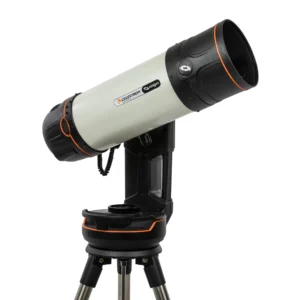
In the previous article, we talked about different types of telescope mounts. Astronomers must learn how to use the equatorial mount if they want to be a professional. Equatorial mounts are the only one that considers the Earth’s rotation, because of this it is very easy to track the celestial object without losing it out from the frame of your telescope. Using an equatorial mount will improve your stargazing experience.
Initially, understanding the equatorial mounts is difficult, because they are slightly difficult to understand. It also gets very confusing for people to understand the equatorial mount because of the way things are described. But we will try to simplify that in this article.
So how exactly do these equatorial mounts work?
The equatorial mount works on the principle of canceling out the earth’s rotation. The equatorial mount has three axes, the first is the polar axis, the second is the Right ascension axis & the third is the Declination axis. From these three, the polar axis is the first one you have to set up.
The whole working of the equatorial mount is based on this polar axis. This axis is always parallel to the earth’s axis of rotation. Your telescope revolves around this axis in the opposite direction of the earth’s rotation which helps you cancel out the earth’s rotation and keeps your object perfectly in the frame.
Right Ascension (RA)
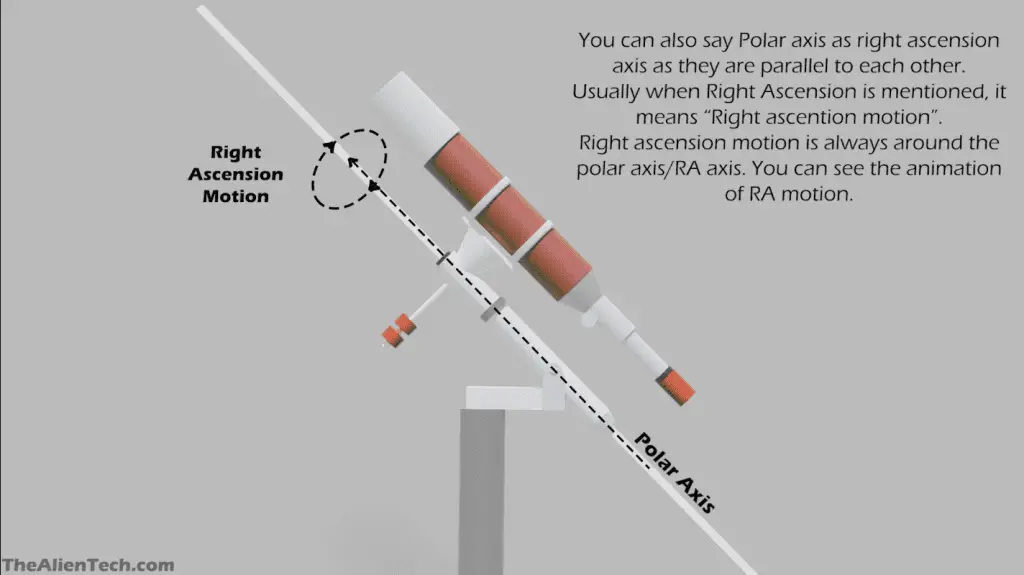
Out of the other two axes, one is Right ascension (RA) which is parallel to the polar axis & rotates around this polar axis. The second is the Declination (DA) axis which is perpendicular to the polar axis.
The right ascension axis – You can also call this a polar axis, as this axis is always parallel to the earth’s axis of rotation. When your telescope moves around this axis in a circle, it is called right ascension motion. You can also consider right ascension as equivalent to longitude.
Declination Axis (DA)
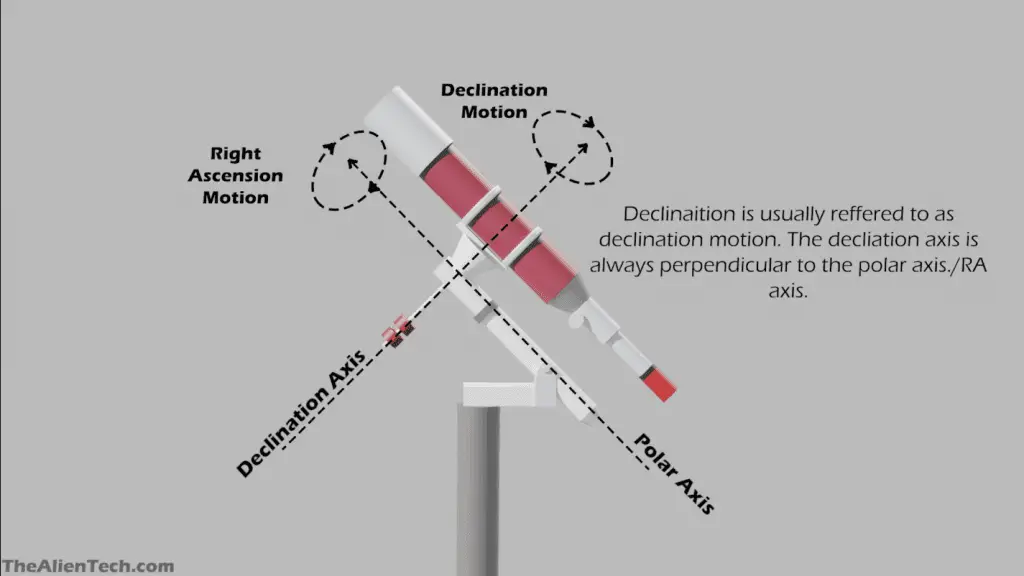
The Declination axis is the perpendicular axis to the polar axis. You can consider this equivalent to latitude.
The combination of right ascension and declination helps you locate the object in the sky. For example, the Right ascension tells you in which direction you should look and the declination tells you how far up or down the object is from the equator.
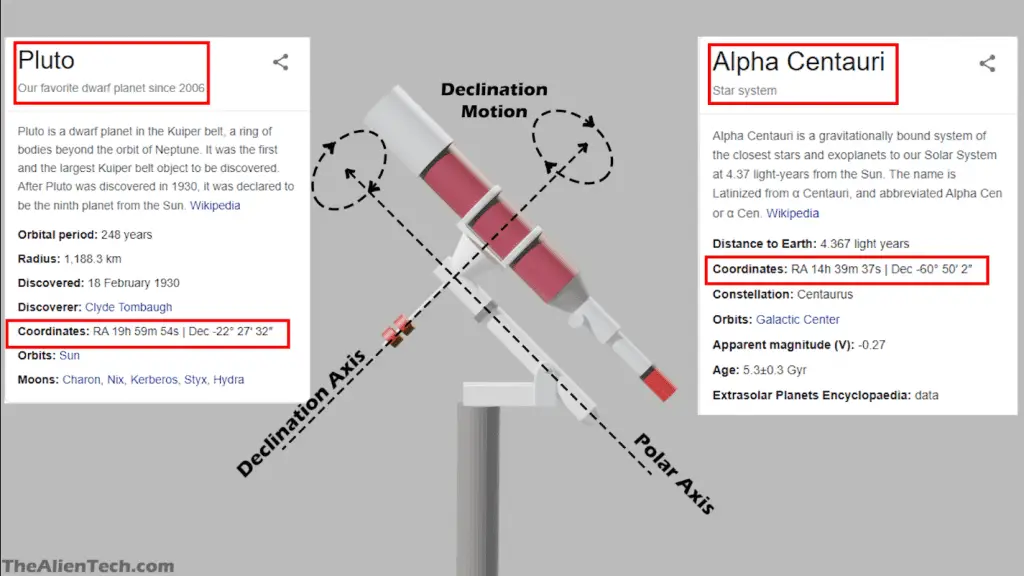
Equatorial mount at poles
When you are at the pole then you don’t have to worry about the rotation of the earth, as one axis of your telescope is already parallel to the earth’s axis of rotation. All you have to do here is the point at an object and start tracking and it will be in the frame all the time.
Equatorial mount at other locations
But if you are anywhere on earth except the poles, then you have to set up your telescope in such a way that the polar axis of your telescope is parallel to the earth’s rotation axis.
If you are in the USA then you have to adjust the polar axis accordingly. Let’s say if you are in India, then you have to adjust the polar axis accordingly.
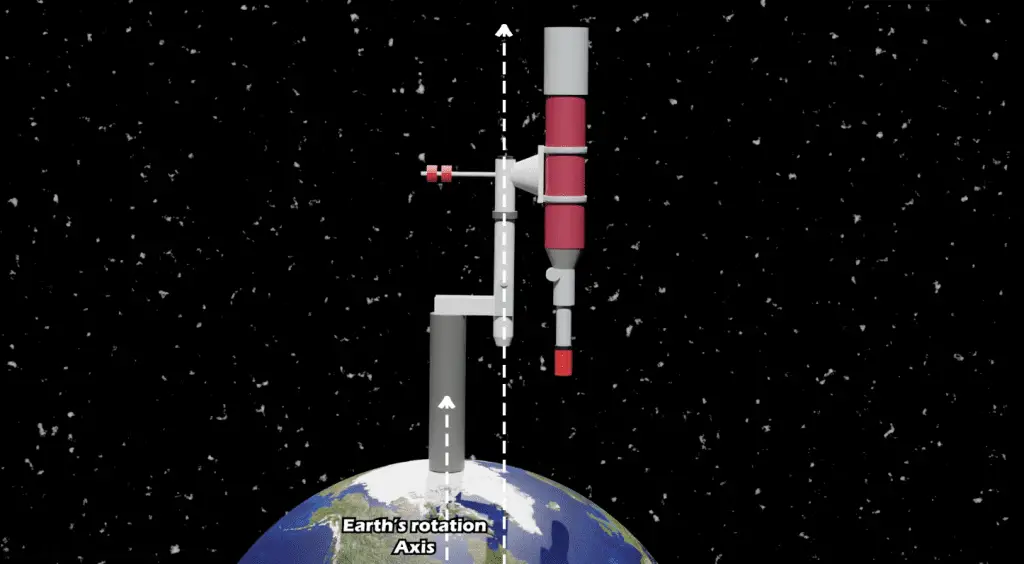
Now let’s see that with an example in the following video. Let’s say we are observing from India. As you can see the polar axis is parallel to the earth’s axis. When we point at an object, the earth’s rotation is canceled out and keeps our object in the frame till it disappears on the horizon.
So that’s it, this is how the equatorial mounts work. We hope this article helped you to understand the working of equatorial mounts. If you want to know more about stargazing & astronomy then check out our Website and Youtube Channel





